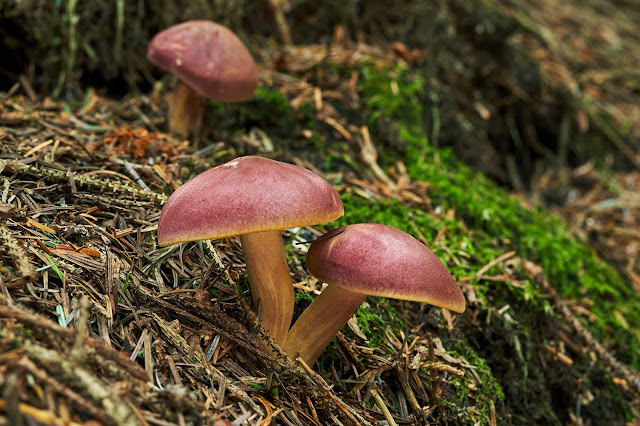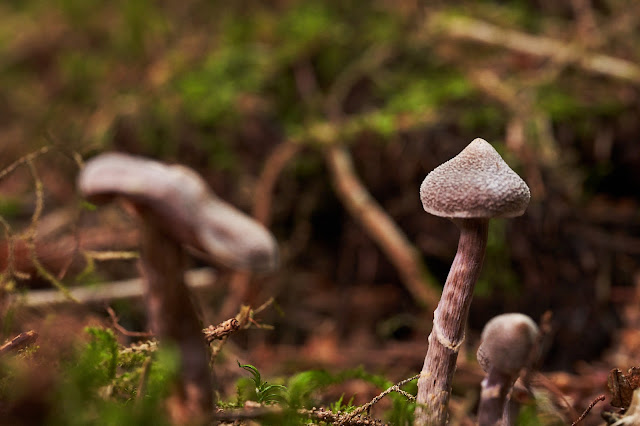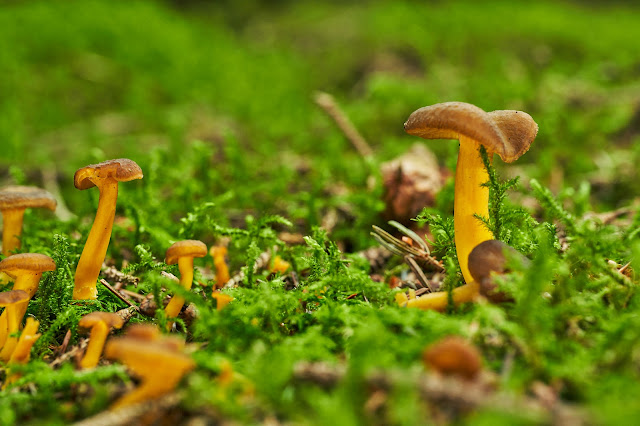Tricholomopsis rutilans

Commonly referred to as Plums and Custard or occasionally as the Strawberry Mushroom, Tricholomopsis rutilans is, nevertheless, a very bitter and inedible fungus. It is always a joy to come across these stately mushrooms, not least because of their habit of colonising buried decaying conifer roots and forming wonderfully photogenic groups. The bright yellow gills of this mushroom serve as a reminder that gill colour is not a good guide to spore colour; the spores of this species are white.(First Nature)

